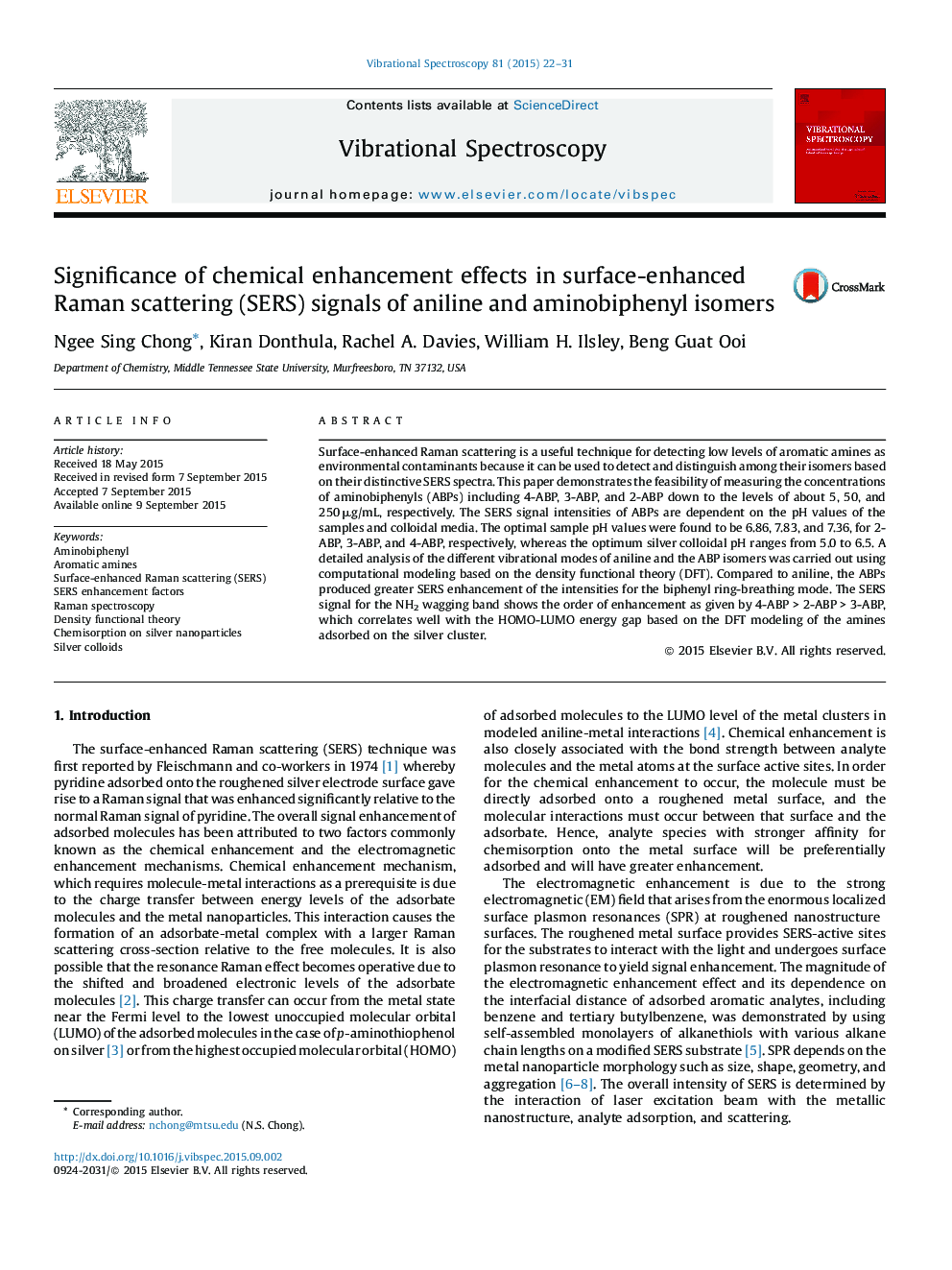| Article ID | Journal | Published Year | Pages | File Type |
|---|---|---|---|---|
| 1250221 | Vibrational Spectroscopy | 2015 | 10 Pages |
Surface-enhanced Raman scattering is a useful technique for detecting low levels of aromatic amines as environmental contaminants because it can be used to detect and distinguish among their isomers based on their distinctive SERS spectra. This paper demonstrates the feasibility of measuring the concentrations of aminobiphenyls (ABPs) including 4-ABP, 3-ABP, and 2-ABP down to the levels of about 5, 50, and 250 μg/mL, respectively. The SERS signal intensities of ABPs are dependent on the pH values of the samples and colloidal media. The optimal sample pH values were found to be 6.86, 7.83, and 7.36, for 2-ABP, 3-ABP, and 4-ABP, respectively, whereas the optimum silver colloidal pH ranges from 5.0 to 6.5. A detailed analysis of the different vibrational modes of aniline and the ABP isomers was carried out using computational modeling based on the density functional theory (DFT). Compared to aniline, the ABPs produced greater SERS enhancement of the intensities for the biphenyl ring-breathing mode. The SERS signal for the NH2 wagging band shows the order of enhancement as given by 4-ABP > 2-ABP > 3-ABP, which correlates well with the HOMO-LUMO energy gap based on the DFT modeling of the amines adsorbed on the silver cluster.
